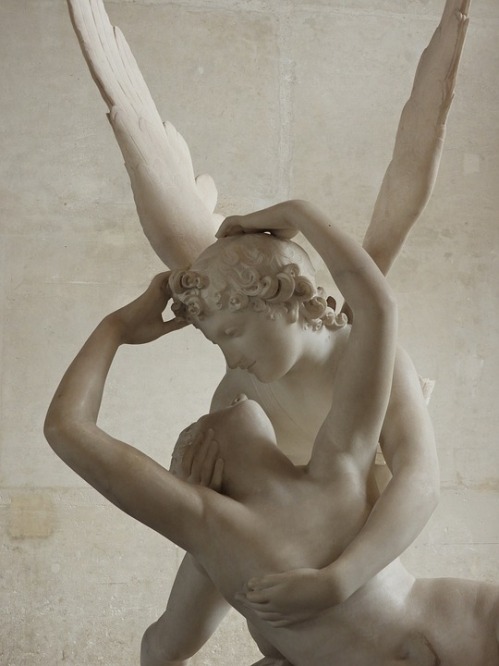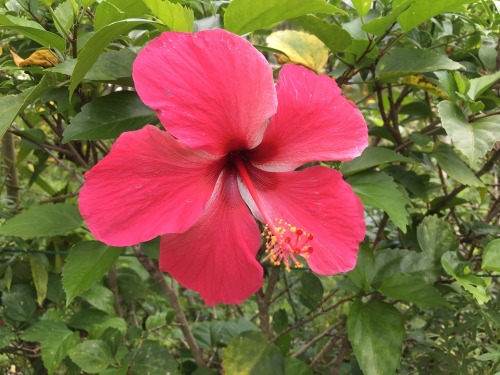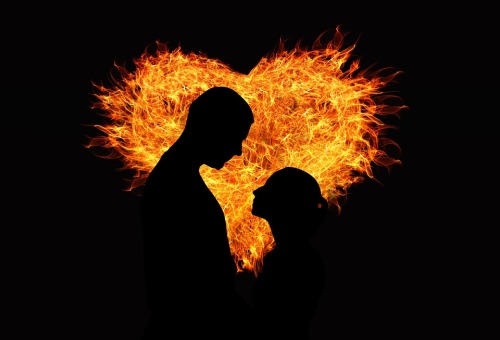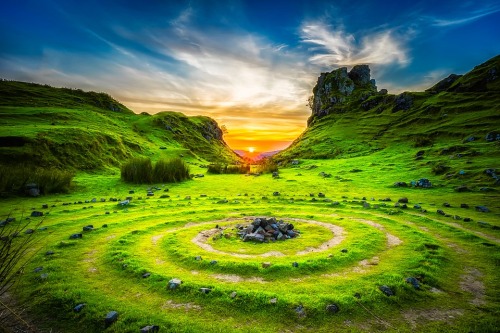
Epic
I inclined
To lose my faith in Ballyrush and Gortin
Til Homer’s ghost came whispering to my mind,
He said: I made the Iliad from such
A local row. Gods make their own importance.
-Patrick Kavanagh
Outlander season 2 is complete, and boy has it been a season for the ages. As this new droughtlander begins, I’m left feeling and thinking all the things. Thoughts are swirling like a whirlpool in my mind, buzzing like the stones at Craigh na Dun, making it nearly impossible to compose an articulate review at all, not to mention doing anything other than to continue to re-feel (perhaps to reveal?) everything this series is.
I’ve watched and re-watched the finale several times, re-watched half of season 1, and read countless reviews. I’ve been comforted and amused by some of the thoughts of other viewers about the strengths and the weaknesses of the season, particularly this one by the legendary and hilarious Connie Verzak. I’ve been annoyed by the critics, particularly the misogynistic ones. And, I’ve been in intuitive feeler space – a lot.
There’s much I could say about the choices the team made this year – a lot I could engage with on the topic, but most of it has been said already, and I’m not inclined to do so. It’s splitting hairs at this point anyway, and for me, doing so is not the most interesting way to engage with great art. Instead, I’ll say this to all parties involved: BRAVO! This series originates from some incredibly complex source material. The fact that Ron D. Moore, Maril Davis and crew were able to make something so coherent, so exquisitely compelling translate to screen is a task of Herculean magnitude. I salute this entire group of artists for what they have accomplished.
Outlander fans are legion, and we are passionate because the work simply is that compelling. If you read regularly, you’ll know that I’ve already written about jumping on the #teamfraser wagon when it comes to my sense of the presence of overwhelming archetypal images in Outlander. I firmly believe that it’s a positive depiction of an aphroditic, erotic bond between these characters, written from a feminist perspective, that fans respond to when it comes to this this series. Frankly, we’ve had dry times in our media when it comes to depictions of love in this way, and I will defend it to the end against anyone who claims it to be “just a bodice ripper,” “mommy porn,” or a “just series for women” for several reasons, not the least of which is that 1). it is a patently unfair assessment, 2). there wasn’t all that much in terms of “bodice ripping” in season 2 anyway, and 3). that this attitude suggests that even if it were such a thing that would somehow make the work less important.
Now that that’s said – whew, I feel better – I need to talk about the archetypal importance of Outlander as an epic. I need to talk about the revival of the epic tradition on television, because epic is vital to our psychological health and like so many other mythic modalities is often diminished by a culture that overwhelms us with imagery while simultaneously offering us little in terms of both emotionally effective and affective content. You see, this is transcendent storytelling folks, and it is, in fact, authentically epic, not just colloquially so.
Epic is, of course, a literary term. It is generally defined as a long poem, most often from the ancient oral traditions, that crosses an extended period of time and space and recounts the legendary deeds of a hero or group of heroes. Epics are meant to be grand, poetic, engaging, and all encompassing. They are meant to swallow you broken and return you whole. Sound familiar? Good. We’ll get to that in a moment.
First, I am compelled to confess something to you, dear reader. I have been gripped more deeply by this entire series than by anything else I’ve ever encountered (while that might be a no DUH, I still need to say it). And that’s saying a lot. In my years as a student and scholar of mythology, I’ve engaged many stories in myriad ways. Indeed, I have engaged this series and for over a year now. I’ve been living and breathing it. I just can’t seem to put the story down, and I don’t foresee that I will do so any time in the near future. I keep re-reading and re-watching. And every time I do, it takes my breath away. The first time I encountered the penultimate climax chapter in Dragonfly in Amber, from the moment Dougal walks in as Claire and Jamie plot to kill the Stuart Prince to the agonizing moment when Claire hurls herself against the stone, I completely disappeared into the story. It blew my mind, and when I put it down, I realized that I’d not been breathing. It was as though at that moment I too had traveled back through the stones with Claire, back to my life in 21st century Southern California. The reality of it was jarring, disorientating, and frankly, somewhat frightening. That had simply never happened to me before.
The way this series affects me has become downright embarrassing. I recently attended a SAG-AFTRA (Screen Actor’s Guild/American Federation of Television and Radio Artists) event with my husband’s niece. She’s an actress and as a member of SAG-AFTRA, she received a notification email that there was going to be an evening with Caitriona Balfe. She immediately thought of me and got tickets. I was elated. I was compelled. I HAD to go.
This isn’t like me. I love stories and I’ve always been a film and TV buff, but I’m not usually quite THIS much of a fangirl. I live in an industry town. Santa Barbara has been a Hollywood ally/destination for as long Hollywood has existed. In fact, some of the earliest silent films were produced right here. It’s part of our culture in the same way it is in LA. I paraphrase what the late great Robin Williams once said about LA: it’s a place where the guy playing basketball next to you at the gym who looks like George Clooney actually IS George Clooney. Santa Barbarans are used to having celebrities around, and they don’t tend to faze us. I’ve been here for over 20 years and have gotten used to seeing people whose work in the entertainment community I admire. I thought I’d be fine. I believed I was unshakeable. I knew I would be excited, but I thought it would be an event like others I’d been to with celebrities. Super cool. I wanted to hear what she had to say. That’s it.
I decided to head down a day early to spend the night with my BFF, an amazing artist who lives in downtown LA’s The Brewery artist collective, and whom I had been desperately trying to convert to the fandom. She and I decided to make it an Outlander day. We drove to the Paley Center for Media in Beverly Hills to check out the exhibit they had running there and drool over the costumes. We wandered out for some coffee and we waited until it was time for me to meet up with my niece for the event. As we sat and talked, my friend began to recount her own recent experience at a SAG-AFTRA event. She mentioned that at the event she had attended, that several other cast members also showed. I found myself hoping that that wouldn’t be the case. As much as I love Sam Heughan as an actor and respect his work as an altruist, I intuited (correctly, as it turned out) that seeing him in person would be an experience I would not, at this juncture, be able to gracefully navigate.
Speaking of Sam, let’s just pause for a moment to say his name and breathe it in like a mantra.
Inhale Sam…
Exhale Jamie…
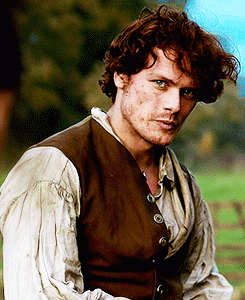
Alright. Feel better? Good. Knew you would. Me too. So. Much. Better. 😀
Nope. I was totally fine just seeing Caitriona. Somehow I just KNEW that seeing the two of them together would constellate energy for me would come dangerously close to frying my psychological circuits – i.e. I likely would have fainted.
I could feel the excitement and nervousness welling up inside, an experience that only continued to strengthen as I met with my niece and stood in line for the event. It was the oddest sensation I’ve ever experienced, something between nervous joy and complete panic. The event itself was great. They screened an episode for us (season 2, episode 7, Faith) and then Caitriona came out to talk to us. It is a wonderful interview, mostly things I’ve heard her speak to in the past, but somehow hearing it in a room full of actors made the quality of the craft come alive in a more meaningful way.
And this camera view is pretty much where I was. I sat quietly and listened, engaged and excited, – all the nods – and I remained relatively calm. The interview ended, and she left the room. As we all shuffled out the door, my niece and I decided to head down the hall to use the restroom. We talked about our impressions as we quietly went about our business, washing hands, brushing hair, the usual things one wishes to do before heading on the road home from an event. Then we walked out into the narrow hallway, and I ran face to face with her walking toward me with a group of event coordinators.
You’d think for a super fan such as myself, this would be the moment I would jump into action and tell her how glorious I find her work to be, but it didn’t happen like that at all. I froze. I can’t explain it other than to say that I felt an energetic glow coming off her the moment I saw her. I gasped (audibly) and didn’t move. She walked by and said hello to my niece and me with a smile, as she continued on her way down the hall. I was completely taken back by my reaction, and I also knew that it was both mythic and archetypal.
I was aware, completely and in that moment that my reaction had absolutely nothing to do with her on a physical level. As fabulous as she is, she was simply fulfilling a role that artists have fulfilled across time – that is to offer herself up as a channel and to be a catalyst for that transformational power that has traditionally been known as the mythic gods, what we often call archetypal images/energies in story.
I had, at that moment, experienced what depth psychologist James Hillman calls being arrested by beauty. Not her beauty, per se, though she is truly a lovely woman filled with luminous energy, but arrested by the beauty of the epic her presence evokes and invokes in me. This is why I’d hoped she would be on her own that day, because truly, just experiencing her part of this energy was enough to render me speechless. Having him there might have killed me. 😉
Artists intuit this archetypal power. We know it intimately. It’s why we do what we do. When we do our best work, we give ourselves over to it so that through our art, others can also experience the power of creativity we channel. That level of engagement can be dangerous. Marilyn Monroe is a classic example. She became so identified with the archetypal energy she channeled that it completely destroyed her. Vivian Leigh is another example of someone who worked so closely with the unconscious that it ultimately destroyed her sanity. Forest Whitaker has spoken honestly about it, noting that it took several months of purification through meditative practices for him to be able to rid himself of Idi Amin after his Oscar winning role in The Last King of Scotland. Yes, that level engagement can be dangerous, but it can also be the most powerful form of communication we have.
In her work on epic and cosmos, literary critic Louise Cowan writes that “…epic poets have to open their imaginations to an arena of sufficient scope that the gods may enter.”[i] I certainly felt the presence of this kind of mythic energy at SAG-AFTRA that day, and I know I’m not alone. There are many, many readers that have been captivated and transformed by this series of books since the first book was published – about 25 years ago when the two principal stars and me were preteens – too young to be aware that this epic that would prove so significant.
Humanity has had many epics about war, the conquering of the foe, and the hero’s journey back to wholeness. In fact, it is generally believed that the entire reason for the Greek epic tradition was to heal a people and process the trauma of war. And we seem to continue to be in that moment, as the 2016 Emmy award nominations this morning reveal a shocking 23 nominations for the war epic Game of Thrones, but no nominations for the principal actors of Outlander.
Although war is certainly central to Outlander as well, what I’m left with is a firm belief that Outlander’s significance as an epic lives in what it reveals about the archetypal expression of passion, devotion, and creation. Our dominant cultural consciousness, seems to miss that epic has the ability to return all kinds of images to wholeness. In doing so, it call upon the concepts of what Plato calls the forms and the ideals, a mode of philosophical expression that this series does extremely well. It presents us with an ideal form of what is possible when partners invest their whole beings to the creative potentialities of relationship, and it tracks that investment across time and space with consistently powerful, fully formed characters, both masculine and feminine. By returning this story to the 18th century – the genesis of the enlightenment, it re-creates the modern western world for us, or least it offers a possibility for us to do so.
This is the psychological efficacy of epic. It allows our imaginations to breathe as we take an extensive and immersive journey with characters that reflects who we are and where we’ve been as a species. Epics create and order the world in long form. They give that process of creation attention, and they allow us to witness it. Television is uniquely positioned to offer a globalized version of this ancient mythic genre. It is impossible to over state the significance of this medium in creating global cultural identity and in regards to its ability to shape our attitudes about gender and relationship.
It is of vital significance that epics like Outlander, a story about the way two whole, creative beings come together to make a new world, continue to have a central role in the myth making medium of television because this story of creativity is the power of Eros. We must make room in this process for this and other culturally subversive perspectives. Perhaps it is the life giving, feminist aspect of the story that balances it and makes it threatening to its detractors. Cowan writes, “the epic assumes that the sacred marriage of the two equal and complementary powers is possible and that in that wedding the whole world is renewed.”[ii] As far as I’m concerned, this is made clearer in Outlander than in any other offering of our contemporary image based forum for myth.
Ultimately, Outlander shows that sustaining the erotic charge not only creates life; it is life. Maybe we, like Claire and Jamie, are living in the last days of something, in our own 20 years of exile – of patriarchal purgatory before we will be able to reconnect and rebuild our cosmos in a way that truly values “rare women” and “loves them well.” But after this forced exile will come a chance for reconnection, a chance to value, cherish, and satisfy our rare women, heal the wounds and soothe the scars of our men, and in the end as a part of that process transcend gender all together to create something new. That WOULD be epic, would it not?
[i] The Epic Cosmos, 11.
[ii] IBID, 22.
